Topics
- active learning (18)
- research assignments (6)
- libraries (1)
- literature-based learning (2)
- multimedia (5)
- museums (6)
- object learning (7)
- online learning (5)
- peer instruction (10)
- storytelling (2)
- learning management system (2)
- syllabus design (3)
- teaching empathy (3)
- teaching fellows (1)
- lecture (3)
- learning goals (8)
- assessment (6)
- data (3)
- backward design (3)
- blended approaches (12)
- case-based learning (8)
- classroom contracts (7)
- classrooms and space (3)
- collaborative learning (27)
- community events (1)
- course transformation (7)
- devices (3)
- learning by making (5)
- discussion (24)
- engaged scholarship (4)
- experiential learning (16)
- feedback (18)
- group work (8)
- guest speakers (7)
- interdisciplinary (6)
- leadership (3)
Send feedback
Subscribe
Copyright © 2024 The President and Fellows of Harvard College | Privacy | Accessibility | Digital Accessibility | Report Copyright Infringement

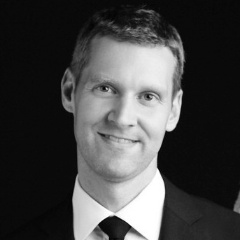 Gavin Porter, Lecturer in Immunology (HMS), helps students develop critical skills for research paper analysis. Prior to 2019, his students would individually read papers and submit their analysis through a traditional templated question approach. Due to the repetitive nature of the assessment product and after realizing that all students could benefit from each other’s questions and ideas, Dr. Porter transitioned this assignment to a collaborative one using a social annotation platform created at Harvard called
Gavin Porter, Lecturer in Immunology (HMS), helps students develop critical skills for research paper analysis. Prior to 2019, his students would individually read papers and submit their analysis through a traditional templated question approach. Due to the repetitive nature of the assessment product and after realizing that all students could benefit from each other’s questions and ideas, Dr. Porter transitioned this assignment to a collaborative one using a social annotation platform created at Harvard called  Dr. Rose Molina
Dr. Rose Molina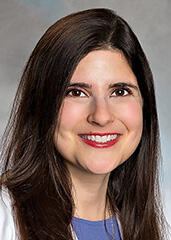 Much like all our faculty across the University, Dr. Tamara Kaplan, Assistant Professor at Harvard Medical School, shifted the pre-clinical neuroscience course,
Much like all our faculty across the University, Dr. Tamara Kaplan, Assistant Professor at Harvard Medical School, shifted the pre-clinical neuroscience course,  Dr. Anita Vanka, Assistant Professor of Medicine and Associate Advisor & Director of Hinton Society at Harvard Medical School, co-directs
Dr. Anita Vanka, Assistant Professor of Medicine and Associate Advisor & Director of Hinton Society at Harvard Medical School, co-directs 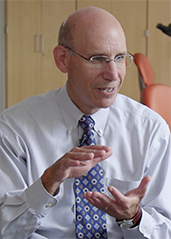 Dr. Richard Schwartzstein, Ellen and Melvin Gordon Professor of Medicine and Medical Education,
Dr. Richard Schwartzstein, Ellen and Melvin Gordon Professor of Medicine and Medical Education,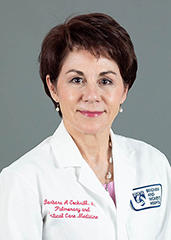 Barbara Cockrill, Harold Amos Academy Associate Professor of Medicine, uses case-based collaborative learning (CBCL) in her Homeostasis I course to help medical students explore real-life clinical scenarios they may face as practitioners. Case discussions start in cohorts of four students, formed at the beginning of the course, and focus on a series of questions. Discussion continues with the full class of 40 students, facilitated by Cockrill and other medical school faculty.
Barbara Cockrill, Harold Amos Academy Associate Professor of Medicine, uses case-based collaborative learning (CBCL) in her Homeostasis I course to help medical students explore real-life clinical scenarios they may face as practitioners. Case discussions start in cohorts of four students, formed at the beginning of the course, and focus on a series of questions. Discussion continues with the full class of 40 students, facilitated by Cockrill and other medical school faculty.
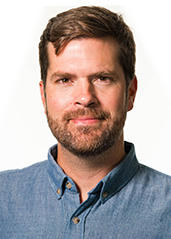 When Dr. Kevin Eggan, Professor of Stem Cell and Regenerative Biology, did research as an undergraduate, it “transformed for me what science was and what it could be.” His
When Dr. Kevin Eggan, Professor of Stem Cell and Regenerative Biology, did research as an undergraduate, it “transformed for me what science was and what it could be.” His 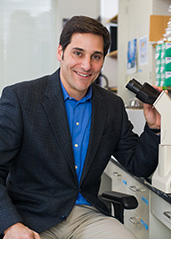 Dr. Carl Novina, Associate Professor of Medicine, and his co-instructor Shannon Turley, amended the traditional graduate seminar Critical Reading for Immunology to teach students comprehension and presentation skills essential to a career in biomedical science. To introduce a topic, students read research papers and present a focused background on the field the paper sought to advance. Then, rather than discussing the paper linearly, students select a key figure that best highlighted the main point. Throughout the semester,students revisit central points of papers and diagram them on the white board—“an effective means to help students better process information and have greater insights into central concepts from the presentations and papers.”
Dr. Carl Novina, Associate Professor of Medicine, and his co-instructor Shannon Turley, amended the traditional graduate seminar Critical Reading for Immunology to teach students comprehension and presentation skills essential to a career in biomedical science. To introduce a topic, students read research papers and present a focused background on the field the paper sought to advance. Then, rather than discussing the paper linearly, students select a key figure that best highlighted the main point. Throughout the semester,students revisit central points of papers and diagram them on the white board—“an effective means to help students better process information and have greater insights into central concepts from the presentations and papers.”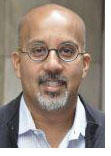 Dr. Sadath Sayeed, Assistant Professor of Global Health and Social Medicine, introduces issues of ethical reasoning in medicine (e.g., confidentiality, professional boundaries, conflicts of interest, informed consent) with hypothetical cases and vignettes.
Dr. Sadath Sayeed, Assistant Professor of Global Health and Social Medicine, introduces issues of ethical reasoning in medicine (e.g., confidentiality, professional boundaries, conflicts of interest, informed consent) with hypothetical cases and vignettes. When Dr. Keith Baker, Associate Professor of Anaesthesia at Harvard Medical School and Director of the Anesthesia Residency Program at Massachusetts General Hospital, gives medical residents feedback, he emphasizes a “learning orientation” (where the goal is mastery), rather than a “performance orientation” (where the goal is validation of abilities).
When Dr. Keith Baker, Associate Professor of Anaesthesia at Harvard Medical School and Director of the Anesthesia Residency Program at Massachusetts General Hospital, gives medical residents feedback, he emphasizes a “learning orientation” (where the goal is mastery), rather than a “performance orientation” (where the goal is validation of abilities).